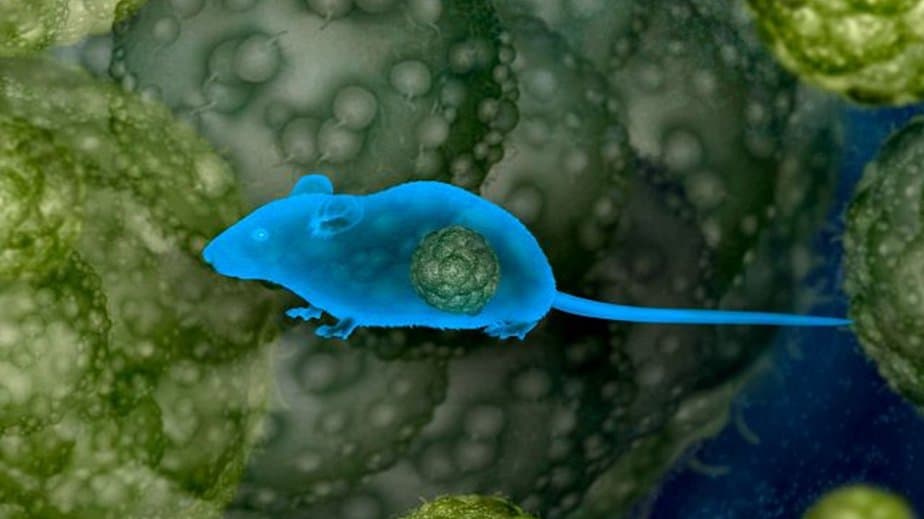What are PDX Models?
Patient-derived tumor xenografts (PDXs) are a beneficial model for translational research in developing precision medicine. In this model, the tumor fragments surgically dissected from cancer patients are transplanted into immunodeficient mice.
Clinical data in patients is correlated with PDX susceptibility to anti-cancer drugs. The evidence from PDX models helps to determine the efficacy of anti-cancer therapeutics, both new and conventional. It also facilitates “co-clinical trials” to assess drug efficacy in PDXs and patients.
Currently, it helps in organoid cultures of several kinds of tumors, such as cancers affecting the brain, lung, breast, ovary, skin, pancreas, and colon.
History and Development
In 1950, the first investigations were started to develop drugs for leukemia by using animal models. In this process, several types of rodent models transplanted with human tumors have been designed and developed to study the outcome of chemotherapy.
Many immuno-deficient mice were injected with human tumor cell illness. Though this model served as a gold standard, the development of tumor cells in mice had a minimal resemblance to the parental tumors.
Often, the tumor cell lines acquire unexpected phenotypes during adaptation to in vitro culture conditions. Therefore, the application of traditional xenograft models has substantial limitations for drug screening and assessing the pre-clinical efficiency of drugs.
Later on, patient-derived tumor xenografts (PDXs) were developed. Unlike the traditional xenograft models, PDXs are more likely to mimic human tumors. It maintains the cellular structures and other structures of the original tumors. Thus, PDX is a valuable and reliable tool for translation research. Currently, it’s the best predictive experiment model for therapeutic responses.
Today, you’ll find several bio-research companies, like Novartis and Crown Bioscience, who are providing cancer PDX models for evaluating anti-cancer drugs.
What are the different uses of PDX models?
PDX models are powerful clinical research tools for evaluating drug sensitivity and efficacy. PDX clinical trials critically evaluate anti-cancer therapies before human clinical trials.
Today, it’s more commonly used in co-clinical trials and drug evaluation. Large pharmaceutical companies have well-established PDX repositories, especially for the development and evaluation of anti-cancer drugs.
Common uses of PDX models include:
Cancer biology: studying the response of tumor cells to cancer.
Co-clinical trials: helps in faster development of medication and phase of clinical trials.
Personalized medicine: utilized for the evaluation of drug sensitivity and precision drug efficacy in an individual cancer patient.
Immunotherapy: helps to reconstitute the human immune system and humor growth; allows the critical examination of immune system functionality and tumor biology.
Related article: Does Graviola Cure Cancer?
Limitations of PDX Models
The tumor heterogeneity present in the original tumor samples and PDX models can become an obstacle to applying the models.
While replacing human stromal cells in the murine stroma, some mouse stromal cytokines will not affect carcinoma cells in PDX models.
Not all tumor samples from patients can be successfully engrafted into a mouse. If the engraftment varies, it’s difficult to standardize clinical study protocols.
It’s expensive to house mice and to maintain histopathological cores for regular testing.
A lot of financial challenges are involved in using PDX in personalized medicines. Just developing a PDX model for a single patient can cost thousands of dollars for the treatment. It takes a lot of time and resources to create a clinical PDX model; such a delay is not suitable for patients with advanced stages of cancer.
Frequently Asked Questions
What are the PDX and CDX lines?
In Cell Line Xenograft (CDX) immun0deficient animals are engrafted with human tumor cells. In Patient-Derived Xenograft (PDX) immunodeficient animals (usually, mice) are engrafted with human-derived tumor tissue.
How do I build a PDX model?
You can develop a PDX model by directly implanting fragments from a patient’s tumor into an immunodeficient mouse.
What does xenograft mean?
A xenograft is a medical technique of transplanting an organ, tissue, or cells to an individual of another species.
What is a humanized mouse model?
Humanized mouse models are highly immunodeficient mice into which human cells or tissues are engrafted. Humanized mice can now be used to evaluate therapeutic patients in a biological environment similar to human physiology.
What is a syngeneic mouse model?
Syngeneic mouse models consist of tumor tissues obtained under the same genetic conditions as a given mouse strain. Syngeneic mice have intact immune systems, which are particularly useful for studies of immunotherapies.
How do patient-derived xenografts work?
Patient-derived xenografts (PDX) are models of cancer. Cells or tissues from a cancer patient are implanted into a humanized mouse. PDX models simulate human tumor biology. Currently, it’s the most efficient translational research model. The efficacy of cancer drugs and other types of treatments are tested on xenografts before they are given to patients.
For further reading, have a look at cancer-causing foods and the Australian juice that kills cancer in other articles here.
